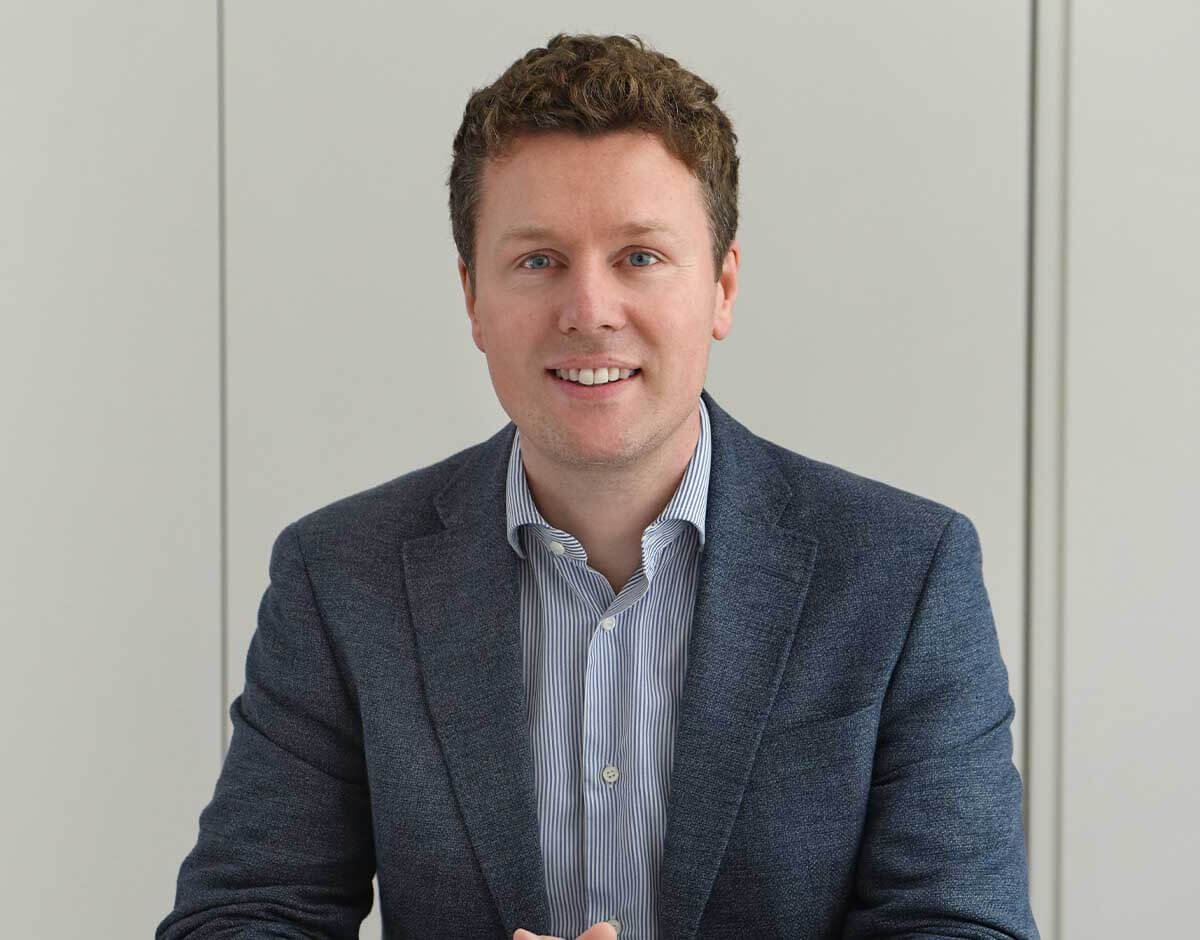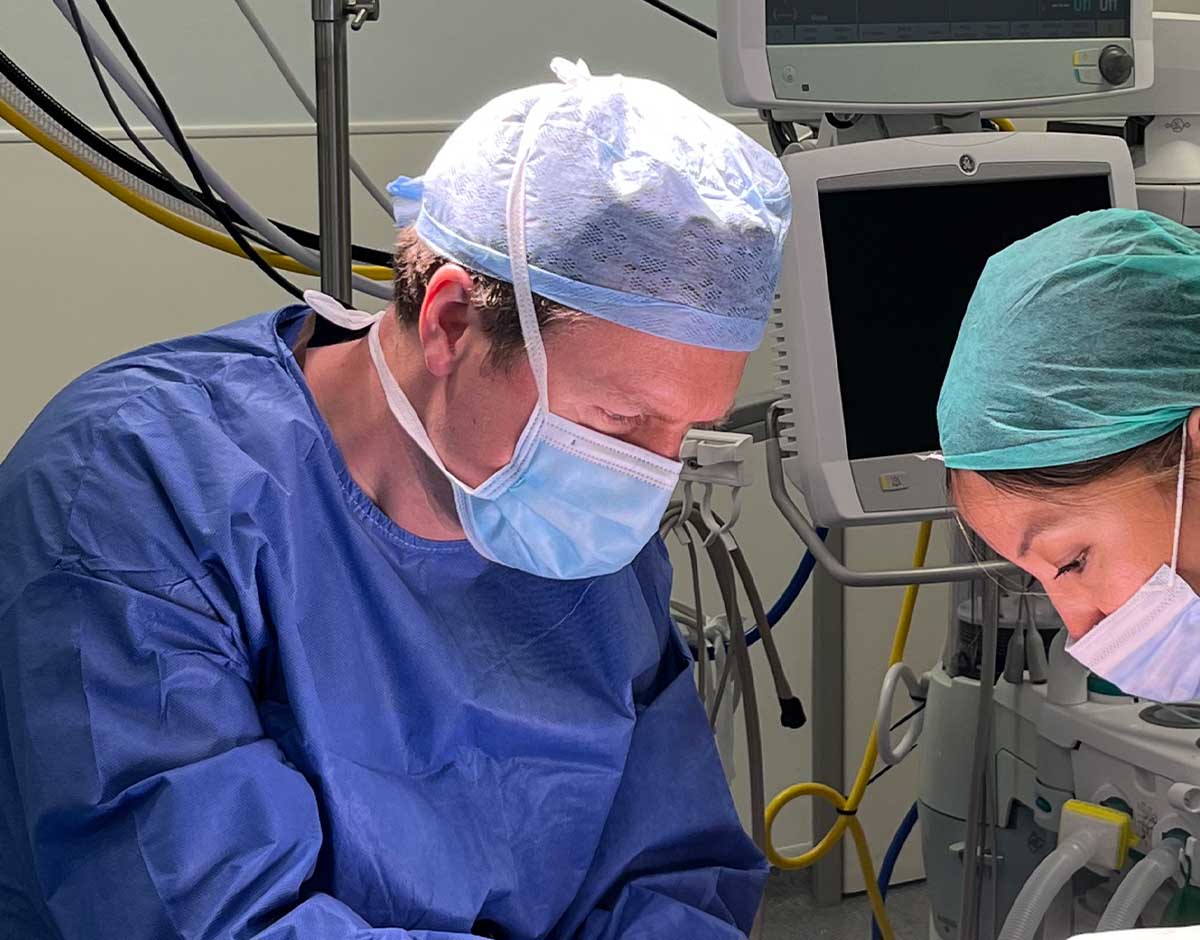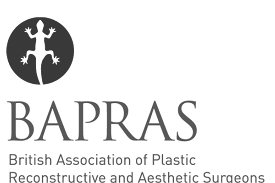-
What is facial paralysis surgery?
Facial paralysis surgery focuses on improving function and appearance of the affected areas, particularly the eyes and smile. The goal is to improve symmetry at rest, ensuring that the face looks balanced and natural when the individual is not actively smiling or making facial expressions.
Static slings may be used to help support and lift drooping facial features. They’re made from your own tissues, and are strategically placed to provide the necessary support. A brow lift may also be performed to elevate the eyebrows and open up the eye area, while nerve and free muscle transfer involves redirecting healthy nerves and muscles from other parts of the body to the paralysed areas of the face.
-
Who can have facial paralysis surgery?
Facial paralysis surgery is often recommended for those with long-term or permanent paralysis. It can be beneficial for individuals who have undergone trauma, such as a car accident, or facial surgery, as well as those with conditions like Bell’s palsy or tumours. Jonathan will be able to assess your suitability when you have your consultation with him.
-
What will happen at my first facial paralysis surgery appointment?
Jonathan will perform a complex assessment and initiate a decision-making process for the management of your condition during your first appointment. There will be a thorough examination to assess the extent of the paralysis, evaluate any underlying causes, and discuss your medical history. Additional tests may be required. Jonathan will talk you through all the possible treatment options.
-
How painful is facial paralysis surgery and what are the risks?
Most patients report experiencing minimal discomfort during the actual facial paralysis surgery itself, as it is performed under general anaesthetic After the surgery, patients may experience some pain or discomfort around the surgical site, but this can usually be managed with pain medication prescribed by the surgeon. Jonathan will discuss the pain management and any potential risks of the surgery once he has assessed the severity of your condition, but in most cases the benefits of the surgery outweigh the risks.
-
How long does facial paralysis surgery take and what results can I expect?
The length of the surgery can range from one hour to several hours, depending on the complexity of the case. Immediately afterwards, you can expect some swelling and bruising, which will gradually subside over time. The final results of the surgery may take several months or even two years to fully manifest, as the nerves and muscles need time to build function.
-
Will I need a brow lift as part of my facial paralysis surgery?
In some cases of facial paralysis, the muscles that control the movement of the brow may be affected, resulting in a drooping or heavy brow. In these cases, a brow lift may be recommended as part of the overall treatment plan. Supporting procedures such as platinum weight insertion to facilitate eye closure and canthopexy or canthoplasty to treat lower lid ectropion (a pulling down of the lower lid) may also be considered to address specific issues related to facial paralysis.
-
What’s the role of Botox in facial paralysis surgery?
Botox plays an important role in restoring facial symmetry and treating abnormal facial movements, also known as synkinesis. It is used to relax overactive muscles that are causing unwanted movements in the face. By injecting Botox into specific facial muscles, the appearance of symmetry in the face at rest can be improved, giving you a more balanced and natural look. It effectively manages the involuntary muscle contractions that occur when attempting to perform certain facial movements.

Facial Paralysis Surgery
Face Reconstruction
Facial paralysis surgery can help treat conditions affecting the facial nerve and movement such as Bell’s palsy, cancer excision, and paralysis after trauma.
Treatment can:
- Restore facial symmetry at rest
- Improve eye symptoms, eye closure and position
- Reduce brow heaviness
- Restore smile and improve the ability to speak, eat, and express emotions
- Reduce unwanted facial movements (synkinesis)
What happens during facial paralysis treatment?
Jonathan will make an initial assessment to determine the priorities of treatment. That typically focuses on the health of the eyes first, and then considers the smile and other facial movements.
Botulinum toxin is a very effective method of improving facial symmetry and reducing unwanted facial movements.
Facial surgery addresses the position (brow /eyelid) or targets the firing of the nerve of movement of the muscles. There are many techniques which can be used, and it depends on the priority.
For the eye, treatments include:
- Brow lift
- Platinum weight in the upper eyelid to facilitate closure
- Lower eyelid tightening and improved position – lateral tarsorrhaphy, canthoplasty, lower eyelid sling
For the face, treatments include:
- Static slings to improve symmetry at rest
- Nerve transfers to power the muscle
- Nerve grafting and muscle transplant (gracilis) to produce spontaneous smile
Exact techniques used will depend on the cause and severity of the facial paralysis. Jonathan may perform a brow lift to elevate the position of the eyebrows and employ additional procedures to the eye. Improving facial symmetry at rest and potentially with movement may necessitate nerve and free muscle transfer. This is where healthy nerves are transferred to restore facial muscle movement. In some cases, a free muscle transfer may be necessary, where a section of muscle from another part of the body is transplanted to help restore facial movement by connecting it to a healthy nerve or a previously transferred nerve graft.
Why choose us for your facial paralysis surgery?
When it comes to facial paralysis surgery, it requires complex planning and assessment. Our experienced team understands the complexity of the assessment needed for a good outcome and are well equipped in the decision-making skills necessary for managing the condition going forwards.
Faqs | Facial Paralysis Surgery
“Excellent treatment and service, would absolutely recommend to everyone.”
Client Review











